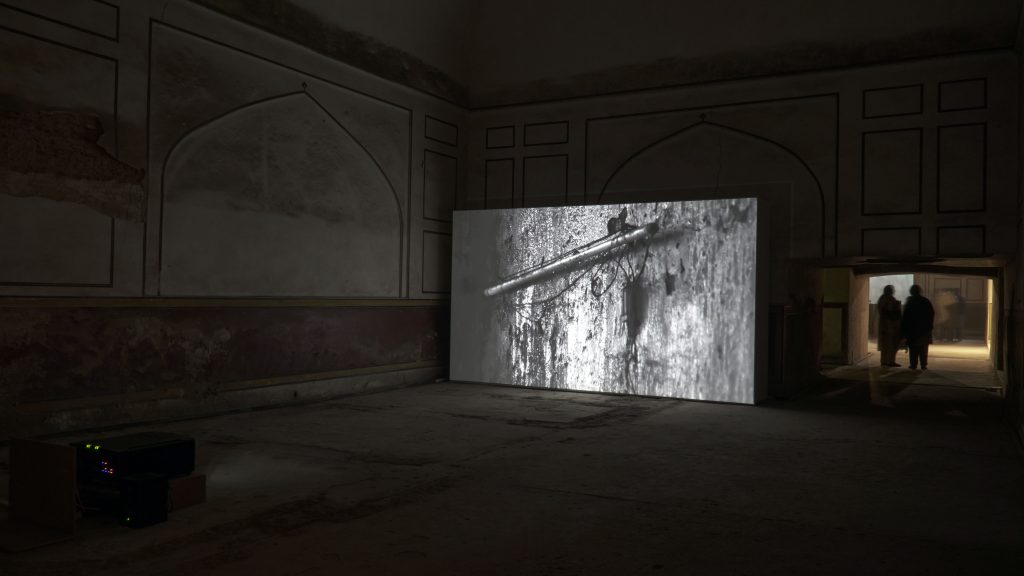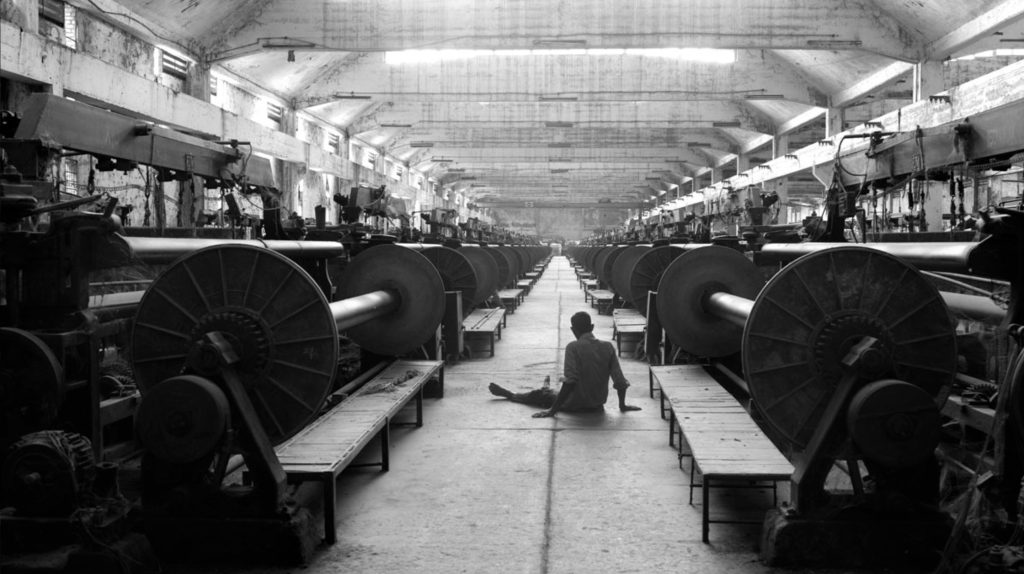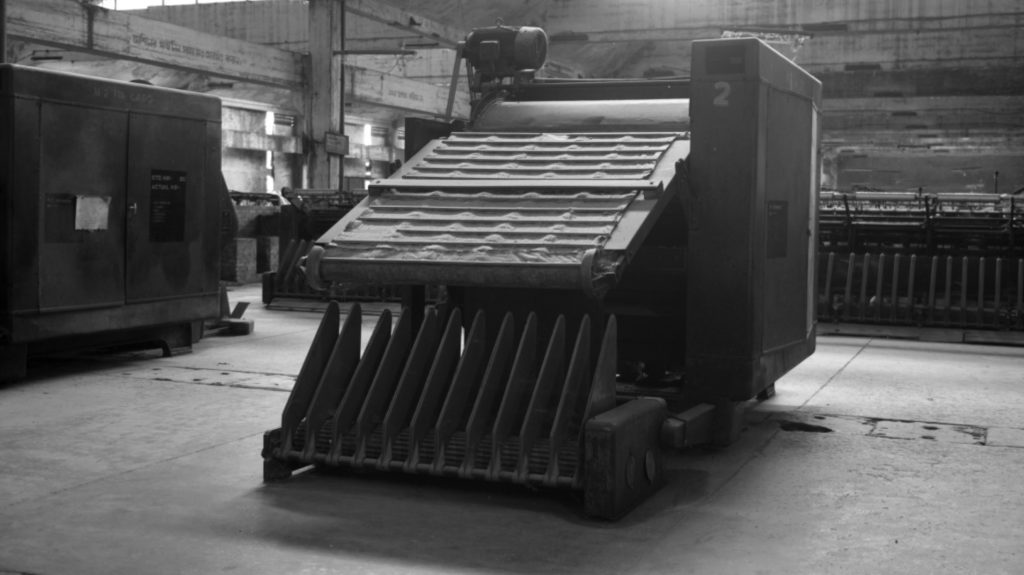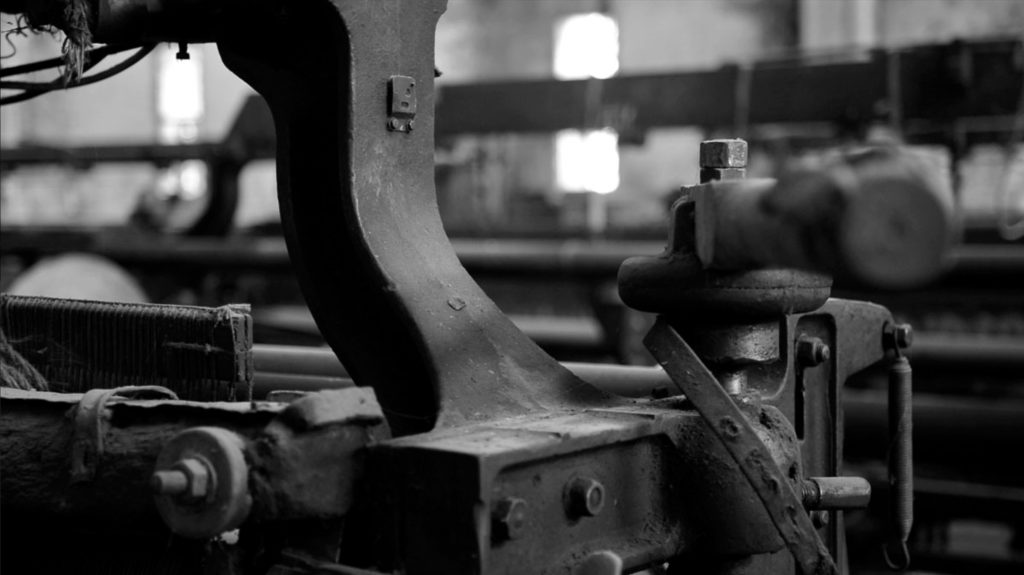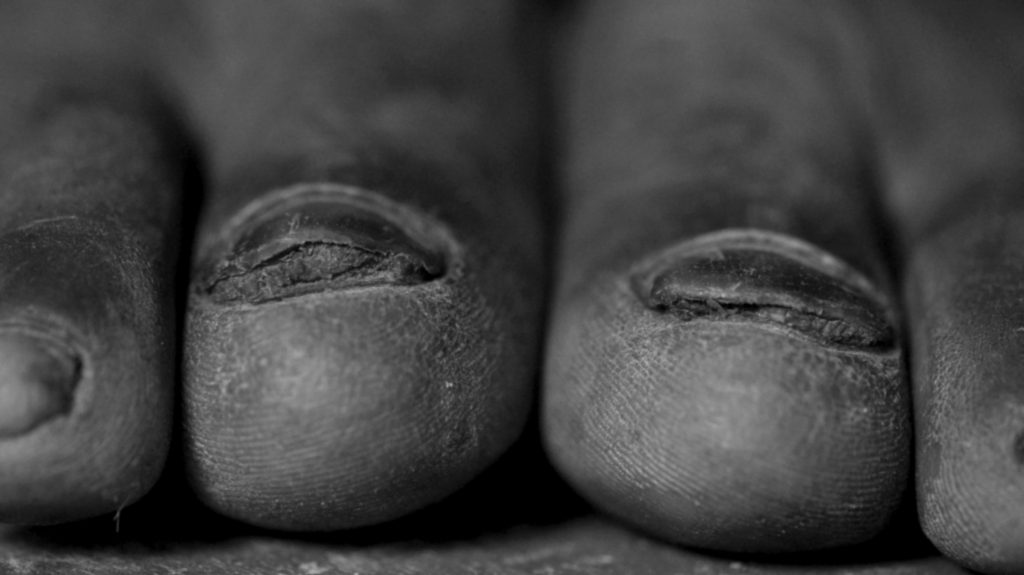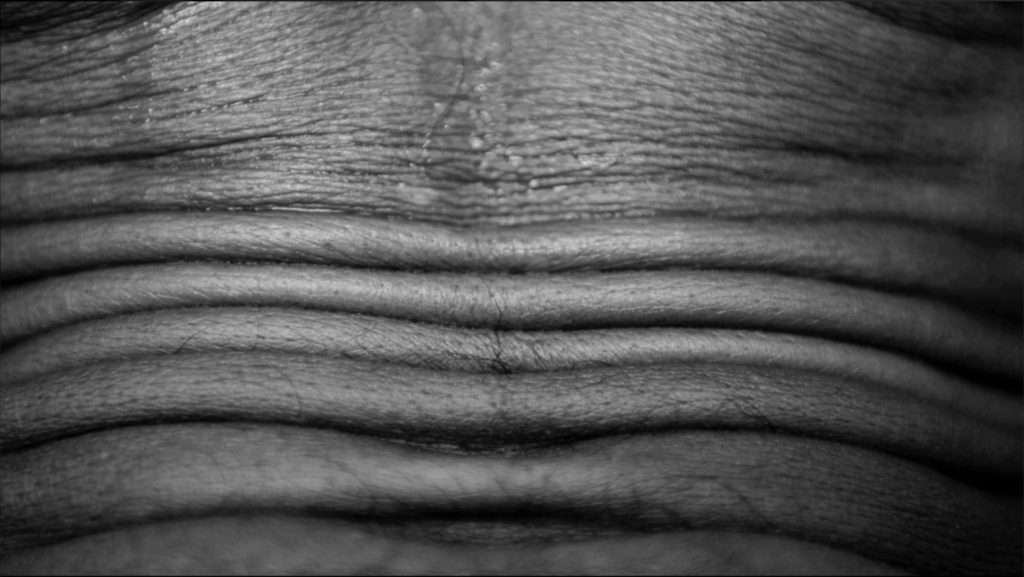Munem Wasif
Machine Matter, 2017
Single-channel, BW, stereo, loop, duration: 14 min 06 secs
A room full of machines breathes in disquieted silence. These objects are nothing more than decrepit metal scraps except to those who smell their memories, and remain conscious of their histories. All is still inside the abandoned jute factories. The soft breeze, dripping water, flying feathers, and the rays of sunlight are the only active elements that fragment this stasis. Wasif’s camera moves subtly, often intruding upon the objects in the space, transforming their bodies into sculptural figures. The continuous shifting of frames that occurs in this process, connects man and machine. The resulting forms submerge and become a single entity. A concerted dilapidation, slow and firm. The echo of chirping birds along with the rattle of engines in the outdoors create an illusory sense of life in the space.
Known as the ‘golden fiber’, jute reflects the potency and the struggle of a modern nation state – Bangladesh. Jute connected Bengal’s peasant smallholders to global circuits of capital, where it rapidly became the premier packaging material of mid-nineteenth century world trade. Before the advent of artificial fibers or shipping containers, it was jute sacks that were used to package the world’s cotton, grains, coffee, sugar, cements, etc.
These struggles prevailed, and following the shift in power from East Bengal to Pakistan, jute became a major source of income for the state, whilst bringing no benefits to the Bengali population. The present-day closing of many jute factories, and exploitation of labor rights continues to mirror the past, and slowly blurs our temporal references.
منیم واصف
مشینوں سے بھرا ایک کمرہ بے چین خاموشی کے سانس لے رہا ہے۔ یہ چیزیں ناکارہ دھات کے ٹکڑوں کے علاوہ کچھ بھی نہیں ماسوائے ُان کے لیے جو ُان کی یادوں کو ُسونگھ سکتے ہیں، اور اپنی تاریخوں کا شعور رکھتے ہیں۔ سب کچھ ابھی تک پٹ سن کی ویران فیکٹریوں میں موجود ہے۔ باِدصبا، ٹپکتا پانی، اڑتےپراورشورج کی روشنی کی شعائیں صرف وہفعال عناصرنہیں جو اس جمود کے ٹکڑے ہیں۔ واصف کا کیمرہ پراسرار طریقے سے چلتا ہے، اکثر خلاء میں اُشیاء میں مداخلت کرتے ہوئے، ان کے اجسام کو مجسموں کی شکل میں تبدیل کرتے ہوئے۔ اس دوران فریموں کو مسلسل تبدیل کرنے کا عمل انسان اور مشینوں کو آپس میں جوڑتا ہے۔ نتیجے میں ببنے والی شکلیں ضم ہو کر ایک واحد وجود بن جاتی ہیں۔ ایک متحد ویرانی، دھیمی اور مضبوط۔ بیرون در انجنوں کی کھڑکھڑاہت کے ساتھ چہچہاتے پرندوں کی آواز خلاء میں زندگی کا ُپرفریب احساس پیدا کرتی ہے
گولڈن فائبر کے نام سے معروف پٹ سن جدید قومی ریاست بنگلہ دیشن کی ُقوت اور جدوجہد کی عکاسی کرتی ہے۔ پٹ سن نے بنگال کے چھوٹے پیمانے کے کاشتکاروں کو سرمائے کے عالمی مراکز سے جوڑا ُجہاں یہ جلد ہی وسط انییسویں صدی کی عالمی تجارت کا بڑا پیک ِجنگ مواد بن گئی۔ مصنوعی اون یا شپنگ کنٹیرز کے ظہور سے پہلے یہ پٹ سن کے تھیلے ہی تھے جو دنیا کی روئی،غلہ، کافی، چینی، سیمنٹ وغیرہ کی پیکنگ کے لیے استعمال ہوتے تھے۔
جدوجہد کا یہ سلسلہ غالب رہا، اور طاقت کا مرکز مشرقی بنگال سے پاکستان منتقل ہونے کے بعد، پٹ سن ریاست کی آمدن کا بڑا ذریعہ بن گئی، اگرچہ بنگالی عوام کو اس کا کوئی فائدہ نہیں مل رہا تھا۔ آج کے دور میں پٹ سن کی کئی فیکٹریوں کی بندش اور مزدوروں کے حقوق کا استحصال بدستور ماضی کی تصویر کشی کر رہا ہے اور بتدریج ہمارے وقتی حوالوں کو دھندلا رہا ہے۔
Co-Commissioned by Sharjah Art Foundation
Special Thanks to Project 88, Mumbai



